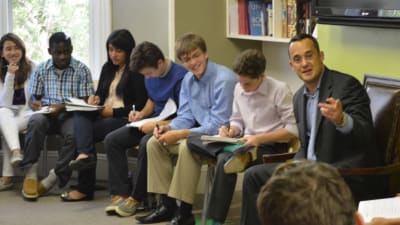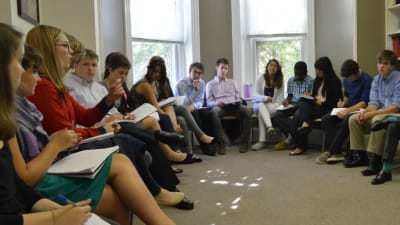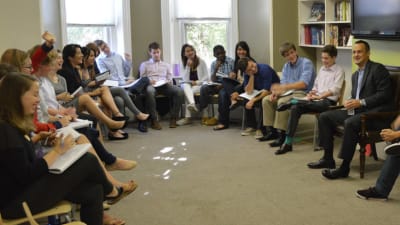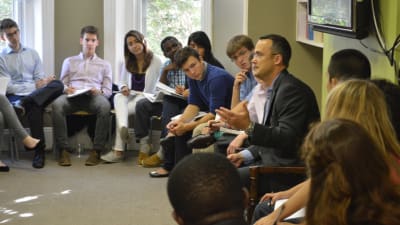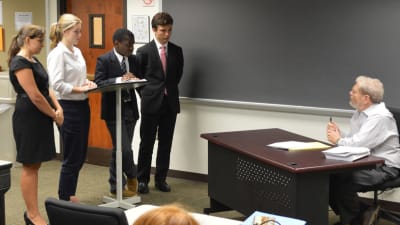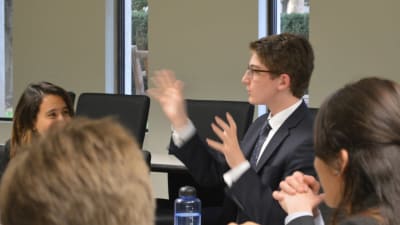Fall 2014 Targets Second Amendment
Suppose you were in front of a Supreme Court justice and had to argue for or against an American citizen’s right to own a gun for self-defense. What would you say? What arguments would you use? That’s the challenge our students confronted this week as they prepared to meet one of the nation’s leading Constitutional scholars head-on.
We began on Monday with an overview of the DC v Heller decision. The 2008 case was a watershed moment for Second Amendment activists on all sides of the issue, and established (in a 5-4 split decision) the Constitutional right for private citizens to own a gun. Students learned about the federal court system, the prefatory and operative clauses, the definitions of the word “militia,” and the difference between a political and Constitutional argument. They also began trading arguments–something that continued throughout the week.
On Tuesday, we met with longtime SEGL guest expert Clark Neily, a senior attorney at the libertarian Institute for Justice. Neily recruited and represented the plaintiffs in what became the Heller case, and was seated at the table during the Supreme Court oral arguments. He not only spoke about the legal case for gun rights, but also made a compelling, charismatic case for libertarianism. (Want to see a few of Neily’s Fox News sound bites? Click here.)
On Wednesday Ladd Everitt, the Communications Director for the Coalition to End Gun Violence paid a visit. Everitt, another SEGL favorite, argued from political, ethical, and legal perspectives that gun control legislation is essential. (Want to see Everitt on The Daily Show? Click here.)
In groups of four, the students then prepped their arguments. This sort of intellectual task is quite different from most that they have received in high school: the answers are not in the back of the book and the format is not on the assignment sheet. It is the kind of challenge that requires students to form, reject, refine, and reform their arguments again and again. *What does “Right of the People” mean? Is the right individual or collective? What does “Keep and Bear Arms” mean? What kind of arms? For what purpose? What is a “Well-Regulated Militia”? A state-organized entity or a group of pre-existing individuals? What does “Security of a Free State” mean? The U.S. or an individual state? What is the relationship between the prefatory and operative clauses? What does precedent say, if anything? What else is important to consider? *It is an exhausting and exhilarating process (and helps the students understand whether they would enjoy law school!).
On Friday afternoon, we traveled to Professor Michael Seidman’s classroom at Georgetown’s law school. Seidman, who is Carmack Waterhouse Professor of Constitutional Law at Georgetown University Law Center, played a Supreme Court Justice while–in groups of four–the students played the law clerks who advise each Justice. He has experience as a Supreme Court clerk: he was law clerk for the first African American Justice, Thurgood Marshall. (He also has experience with persuasive arguments; for example, check out this controversial piece on The New York Times op-ed page.) and one by one the groups of “law clerks” stood in front of “Justice” Seidman. He interrupted, cajoled, considered, and ultimately praised their efforts in a virtuosic display of Socratic, law-school-inspired teaching.
After the experience, the students reflected on their successes and failures, ultimately ending the experience feeling both humbled and more confident. As one student said afterward, “This is why I came to SEGL.”
Next week: ISIS, the media, and speeches with former lead Hillary Clinton speechwriter Lissa Muscatine.
